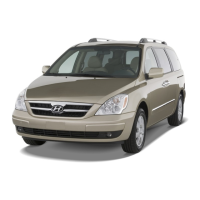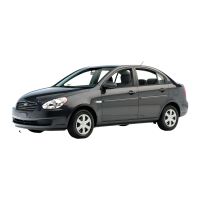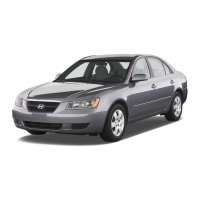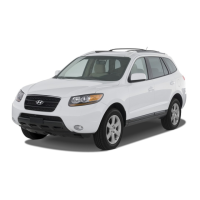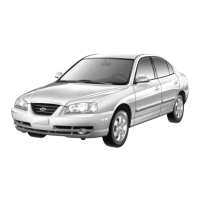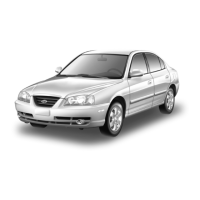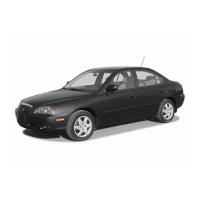
Do you have a question about the Hyundai 2008 Elantra and is the answer not in the manual?
| Brand | Hyundai |
|---|---|
| Model | 2008 Elantra |
| Category | Automobile |
| Language | English |
Explains the general layout of the manual, the use of WARNING, CAUTION, and NOTICE sections for personal safety.
Details on gasoline, alcohol, and methanol fuel compatibility, including warnings about E85 and methanol.
Provides explanations for various warning and indicator lights on the instrument panel.
Identifies and explains the various components and controls on the vehicle's instrument panel.
Details on seat belt restraint systems, warnings, and proper usage for occupant safety.
Guidelines and warnings for proper installation and use of child restraint systems.
Information on SRS components, functions, and warnings related to air bag deployment and safety.
Information on key operations, recording key numbers, and warnings about ignition key usage.
Instructions on operating door locks from outside and inside the vehicle, including child-protector locks.
Details on electronic power steering, tilt steering, and horn operation.
Overview of the instrument cluster, including gauges, indicators, and illumination controls.
Explanation of controls for manual heating, air conditioning, and mode selection.
Guide to operating the automatic climate control system for heating and cooling.
Information on antenna types and operation of the car audio system.
Pre-drive checks including windows, tires, lights, gauges, and safety warnings.
Procedures for starting the gasoline engine, including key positions and warnings.
Explanation of automatic transaxle operation, ranges, and cautions.
Details on power brakes, brake failure, disc and drum brakes, and warnings.
Advice for hazardous conditions like water, snow, ice, mud, sand, and rocking the vehicle.
Recommendations for snowy or icy conditions, snow tires, and tire chains.
Information on vehicle capacity weight, seating capacity, towing capacity, and cargo capacity.
Step-by-step instructions for safely changing a flat tire.
Troubleshooting steps and warnings when the engine fails to start.
Procedure for jump-starting a vehicle using jumper cables and warnings.
Actions to take if the engine overheats, including safety precautions.
Explanation of TPMS operation, telltales, and malfunction indicators.
Guidelines and precautions for towing the vehicle, including services and methods.
Checks and inspections recommended for the owner to perform regularly.
Guidelines for normal and severe usage maintenance schedules.
Instructions on checking and changing engine oil and filter.
Information on checking and changing engine coolant, including warnings.
Guidance on checking brake/clutch fluid level and warnings.
Advice on tire care, inflation, replacement, rotation, and alignment.
Information on fuse types, locations, replacement, and warnings.
Instructions for replacing various vehicle light bulbs and associated warnings.
Overview of emission control systems and operating precautions for catalytic converters.
Details on vehicle identification number (VIN), VIN label, and certification label.
Procedure for reporting safety defects to NHTSA and Hyundai Motor America.
Specifications for tire size, inflation pressure, wheel size, and lug nut torque.
Lists recommended lubricants and fluids for engine, transaxle, coolant, and brakes.
Provides a chart for selecting engine oil viscosity based on temperature range.
